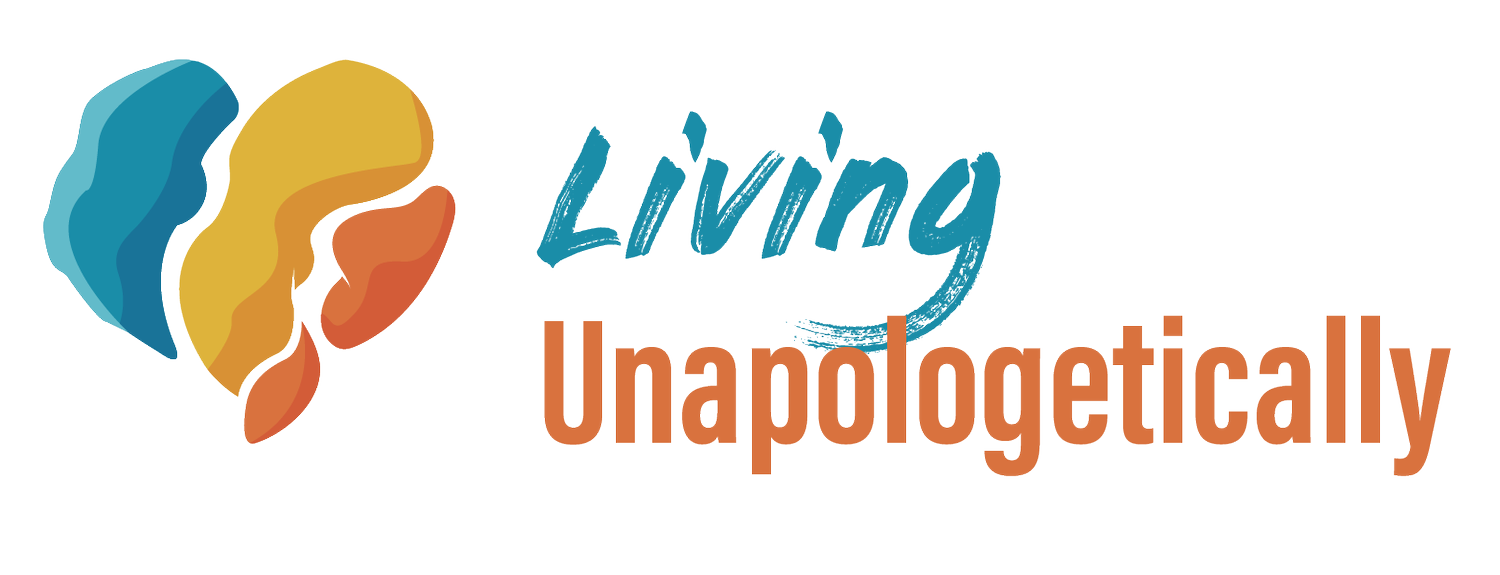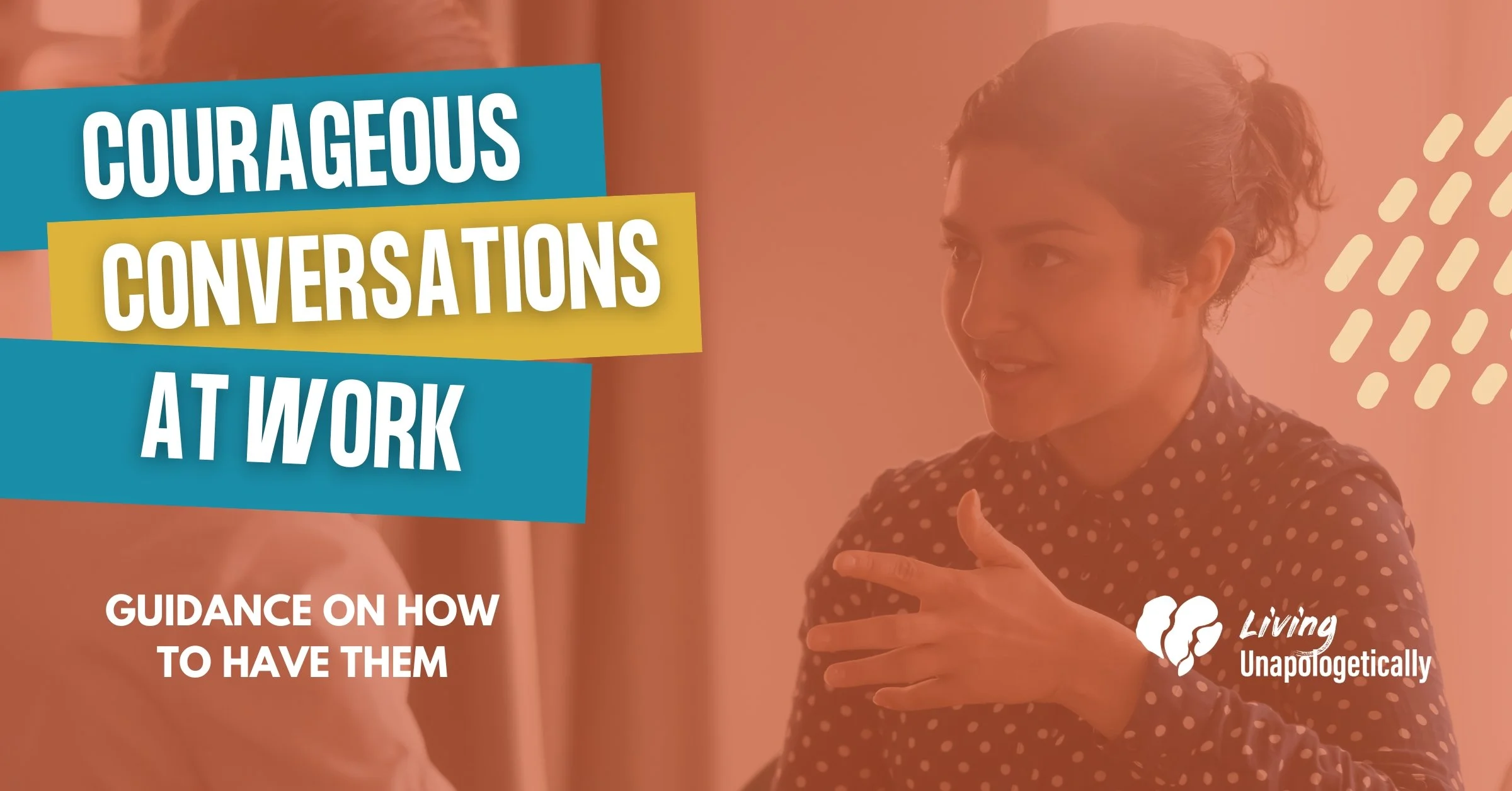How to Have Courageous Conversations at Work [2023]
Take a look at any leadership development curriculum, and you’ll see a range of courses -- organizational behavior, strategic management, coaching, etc. -- aimed at developing effective employees and fostering workplace culture. And when it comes to diversity, equity, and inclusion (DEI), one thing is conspicuously missing from yet integral to that list: Courageous Conversations.
The degree to which an organization welcomes, or avoids, conversations that many consider difficult plays a major role in building, or inhibiting, a culture of inclusion. Without courageous conversations, a culture of silence can fester and limit an employee’s sense of belonging.
What is a Courageous Conversation?
Living Unapologetically’s definition of courageous conversations is:
Discussions between workplace professionals to openly discuss topics so they can better understand challenging situations, improve collaboration, and strengthen relationships. The goal of these conversations is to promote inclusion, understanding and positive action by creating mutual awareness of employees’ experiences and perspectives related to diverse identities, backgrounds, experiences, or viewpoints. Employees are encouraged to lean into discomfort and sustain the conversation when it would typically get diverted. We believe that courageous conversations, with ourselves and others, promote authenticity, healthy lives, and happy hearts.
When this process challenges an organization’s status quo or an individual’s frame of reference, it can be uncomfortable to initiate and sit through, and it is easier to brush the conversation aside instead of embracing it. Yet within this discomfort lies an incredible opportunity to develop as a leader and grow as an organization.
How Do I Have Courageous Conversations?
Courageous conversations are like exercise - the first attempts will feel painful. The weight will feel heavy, your body may resist at first, and your muscles will be sore. But in the process, you are stretching, growing, and expanding your capacity to do hard work and, in time, the results will speak for themselves.
Here are some tips to get started:
Start by Soul Searching. Self-awareness makes it easier to have tough conversations, and understanding your emotions allows you to view situations objectively and avoid responding in ways that may be perceived as defensive. Be open to feedback from others and seek support from supervisors, mentors, or colleagues if necessary when the process feels challenging.
Lean into the Discomfort. The proverbial “elephant in the room” will not go anywhere until acknowledged, and in courageous conversations, this applies in two ways. First, acknowledge that the conversation may stir up feelings of discomfort. This allows both parties to arrive from a place of vulnerability and break down any power dynamics. Second, naming the discomfort also acknowledges the tension in a situation and that something must be done to relieve it.
Acknowledge Power and Privilege. Courageous conversations have a more balanced power distribution than typical workplace conversations. For supervisor-employee conversations, leaders must consider the power and/or privilege they hold and, equally, be aware of when that dynamic shifts between parties. Further, leaders must be aware of how various dimensions of diversity - racial, economic, gender, religious, etc. - add additional layers that impact how power and privilege are distributed. Practice empathy by considering the other person’s frame of mind and learn what is needed to move forward from a place of mutual respect and understanding.
Commit to the Future. Create a culture in which courageous conversations are encouraged by establishing workplace norms that welcome open discussion of difficult topics. Add these skills as goals and growth areas for all employees and consider the role you play in creating a safe environment for employees. These actions will grow into a long-term commitment to having courageous conversations that will help your colleagues and organization thrive.
The quest to improve an organization’s DEI practices will not come without obstacles, but you have the ability to see these challenges and barriers or trampolines. Embracing discomfort and reframing difficult conversations as courageous fosters an environment where employees feel welcome and encouraged to show up to work authentically.
Contact us if you’re ready to engage in experiential learning to develop practical skills and improve relationships in your organization.
Charmaine is a Relational DEI expert who sits at the intersection of thinking, feeling, and doing. She is an author, facilitator, skill builder, safe-space holder, family member, partner, and friend. And in all of those, her DEI lens is in constant use. Charmaine uses a social justice lens to help clients explore their individual and organizational needs amidst the backdrop of power, privilege, and oppression. You can access her book (Bias-Conscious Leadership), guided meditations, free tips sheets & guides, and blog posts on her website, www.livingunapologetically.com.




